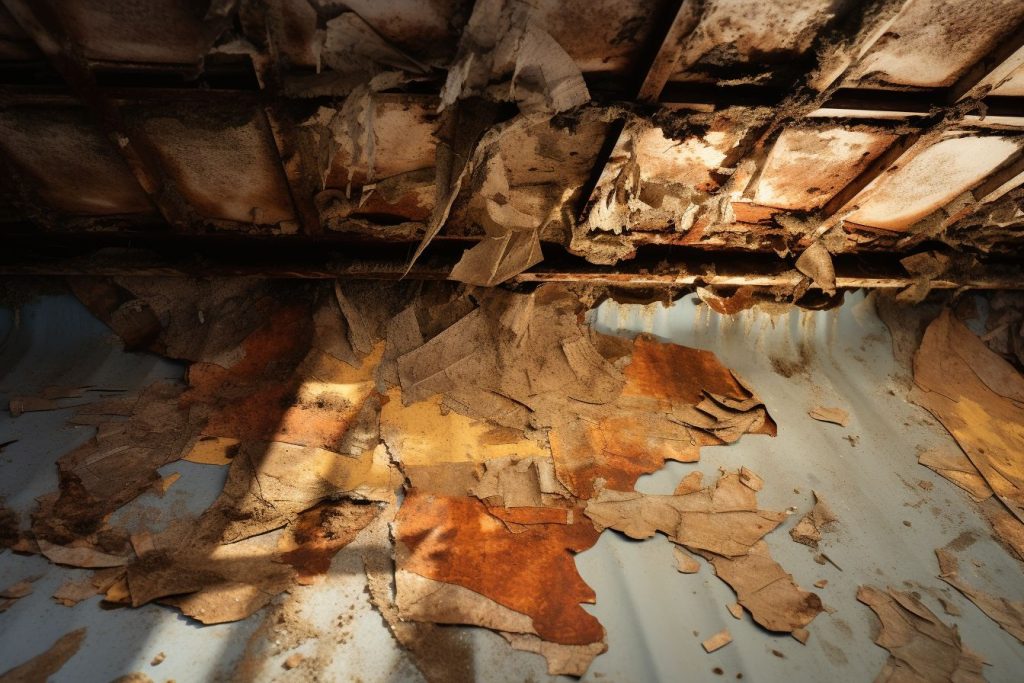Is your roof showing signs of decay? Roof rot, a common problem caused by humidity changes, moisture from condensation, and ventilation dysfunction, can lead to severe structural damage over time.
In this article, you’ll learn more about the main causes of roof rot and how to prevent it effectively. Read on for valuable insights and solutions that can save your roof!
Key Takeaways
- Humidity, moisture from condensation, ventilation issues, and water leaks primarily cause roof rot.
- Fluctuating temperatures in the attic can create a breeding ground for mould and fungus, leading to the decay of roof components.
- Moisture from condensation can contribute to rotting materials on the roof’s surface and attic.
- Inadequate ventilation hampers airflow and increases humidity, accelerating wood rot development.
- Water leaks can cause serious damage to the roof’s structure and lead to further issues like mould growth.
What Causes Roof Rot? – An In-depth Analysis
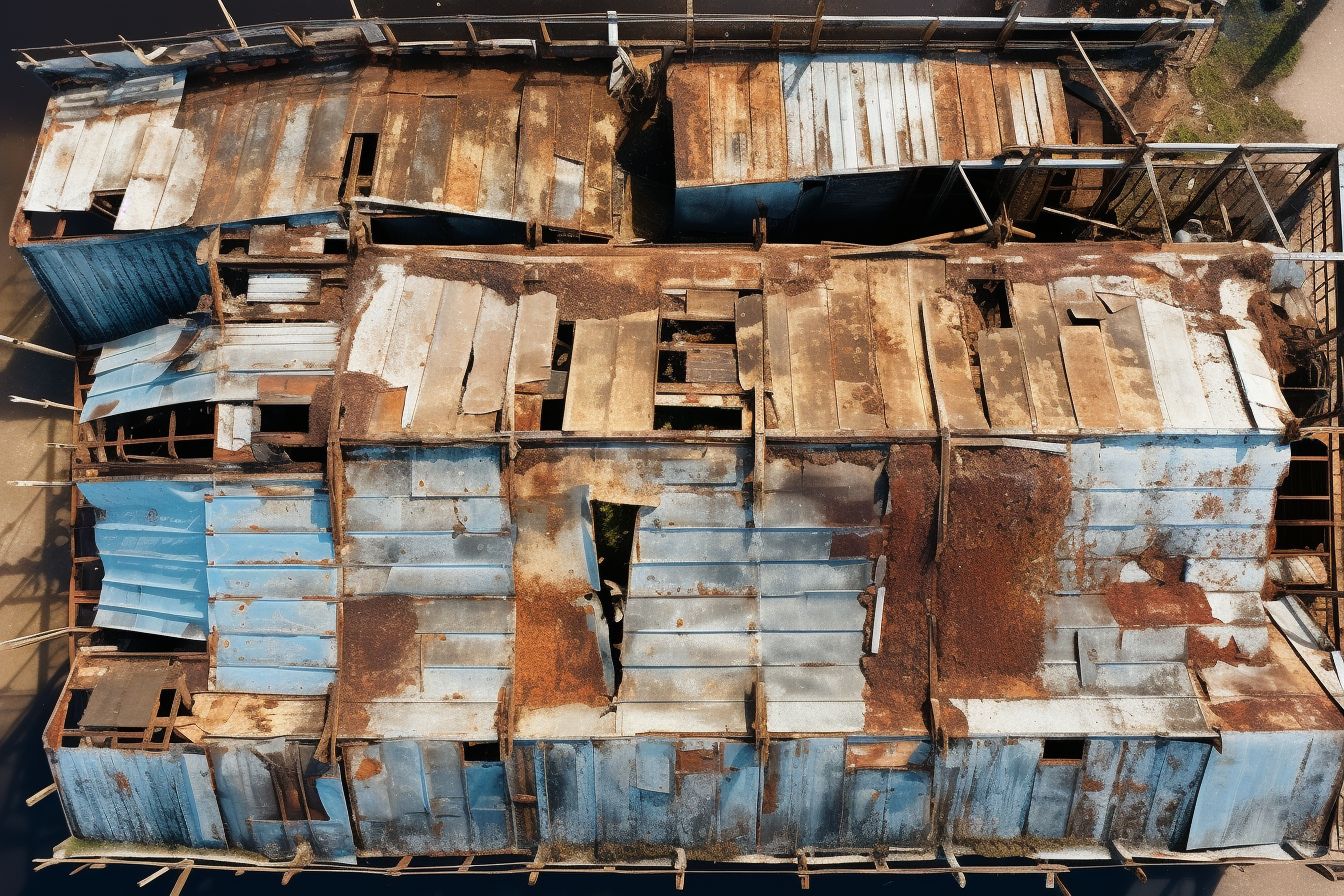
Uncontrolled humidity in the attic is one significant cause of roof rot. As temperature changes occur, they create this high level of humidity that consequently promotes decay and fungal growth.
Moreover, moisture generated from condensation acts as a catalyst for mould development on roofs. This damp environment encourages wood rot and subsequent structural damage.
Ventilation issues compound these problems by preventing proper air circulation. Without effective ventilation, condensation can accumulate, leading to deterioration and, eventually, roof rot.
Additionally, water leaks play a dangerous role in damaging rooftops over time as they provide excess moisture conducive to rotting shingles and other roofing materials. Furthermore, flat roofs are more susceptible to such issues due to an increased likelihood of poor ventilation and moisture accumulation, which resultantly expedite the process of decay.
Main Causes of Roof Rot
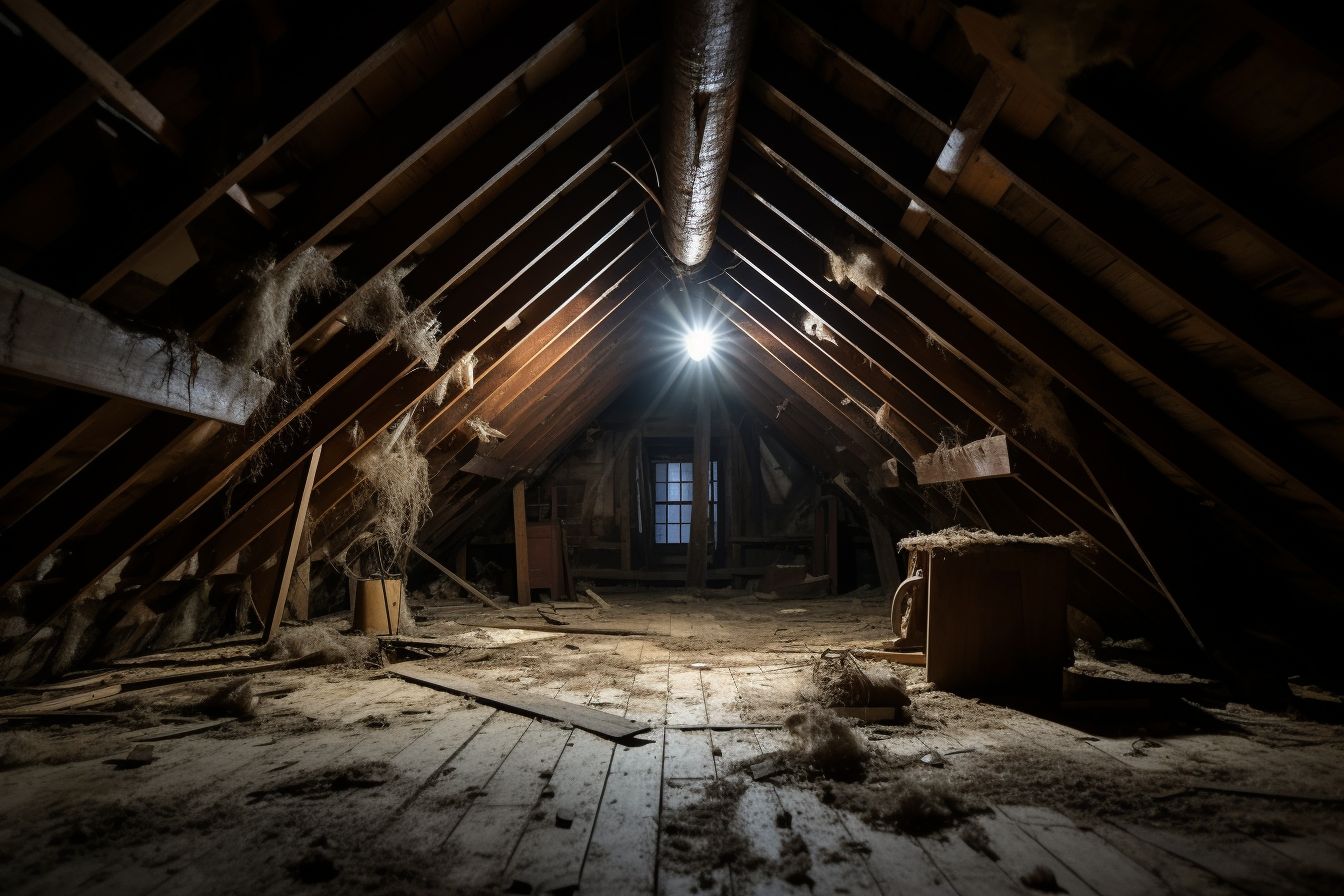
Roof rot can be caused by humidity from temperature changes in the attic, moisture from condensation, ventilation issues, and water leaks.
Humidity caused by temperature changes in the attic
Humidity levels in an attic fluctuate due to temperature changes, becoming a leading cause of roof rot. This process starts when hot temperatures cause wood rafters, roofing joists, and roof decking to expand.
The expansion paves the way for moisture retention that could later lead to devastating wood deterioration by encouraging the development of damaging fungi.
The problem escalates when trapped excess moisture contributes further to this decay process. In such situations, condensation builds up on the surface of your roof over time. If not addressed promptly, it can result in severe roofing damages that are typically costly.
Ventilation issues might exacerbate this situation by increasing humidity levels within the attic space, creating an ideal environment for accelerated wood rot development and increasing attic moisture retention issues.
Moisture from condensation
Condensation is a common phenomenon that can cause significant roof rot. The process involves excess moisture in the air cooling, condensing and clinging to surfaces when the temperature drops.
On your roof, this moisture creates a damp environment perfect for mould infestation and wood decay to thrive. Fungal growth gradually leads to rotting materials in your attic or on the roofing itself, weakening its structural integrity over time.
Ignored long enough, these spots of decay can turn into serious water damage, inducing leaks and further exacerbating the problem. It’s no wonder that combating moisture from condensation becomes an essential step towards preventing roof deterioration.
Ventilation issues
Inadequate ventilation in your attic can lead to a range of problems contributing to roof rot. Excess humidity builds up when there is not enough airflow, causing the temperature to rise and creating ideal conditions for dampness.
As a result, the roof materials start decaying, and shingles deteriorate more quickly than they should. This reduced lifespan of your roof affects its integrity and increases the chances of mould growth and mildew formation due to condensation buildup.
Proper ventilation is crucial for maintaining a healthy and long-lasting roof.
Water leaks
Water leaks are a major cause of roof rot. When leaks in the roof, water seeps through and can cause serious damage to the structure. The surrounding wood can decay and deteriorate, leading to further issues such as mould and mildew growth.
It is important to promptly address any water leaks and fix them to prevent costly damage from occurring. Installing a leaf gutter guard can also help prevent roof leaks by keeping debris out of the gutters and ensuring proper drainage.
Regular maintenance and inspections are key in identifying and repairing any potential sources of water leaks before they lead to severe roof rot.
Signs of Roof Rot
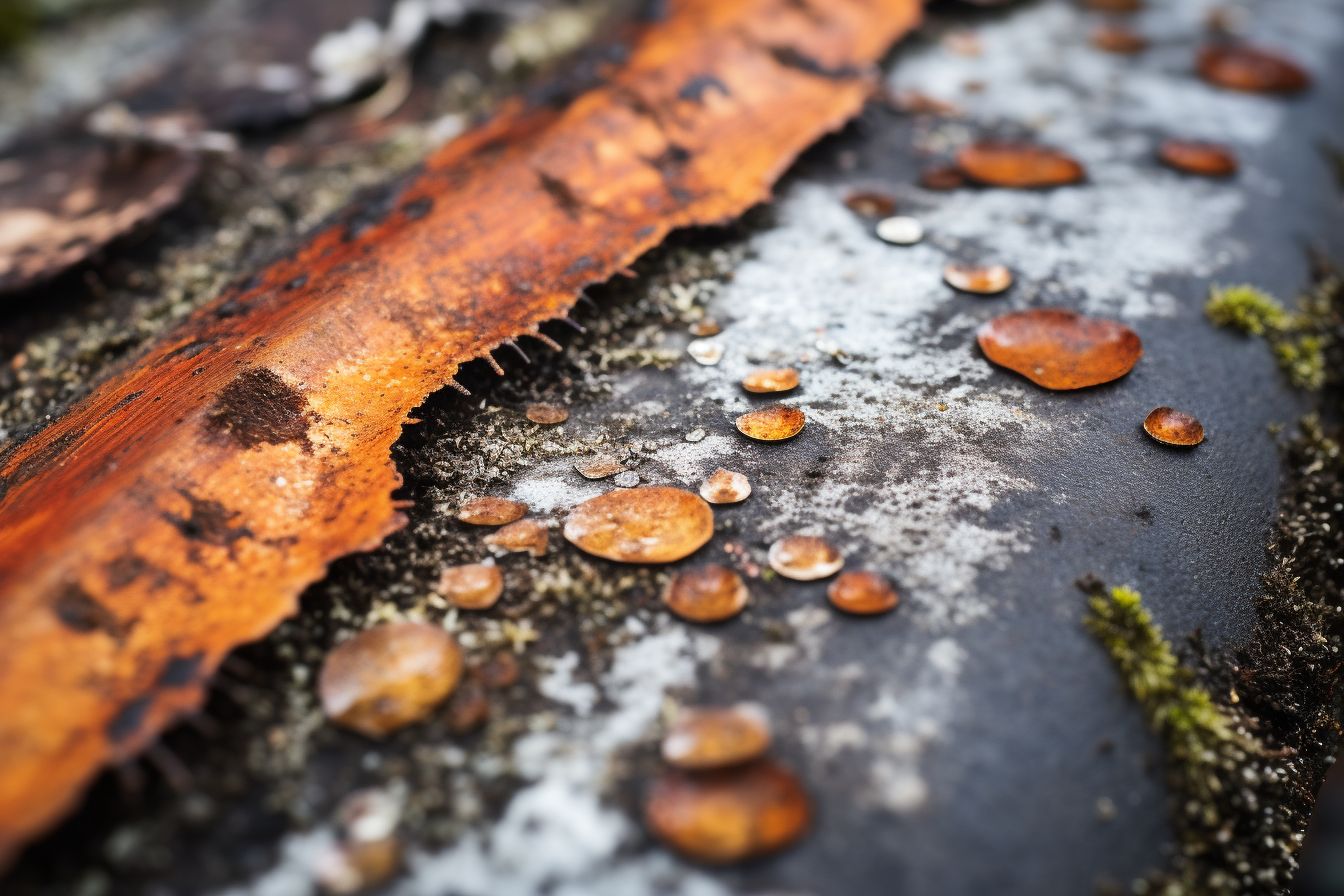
Roof rot can cause various visible signs of damage. These signs indicate the presence of decay, deterioration, and moisture damage in your roof. Watch out for the following signs of roof rot:
- Fungal growth: Look for mould or fungus on the surface of your roof. This can appear as green or black spots and indicates excessive moisture.
- Water damage: Check for water stains or discolouration on the ceiling or walls inside your home. This indicates that water has penetrated through the roof and caused damage.
- Structural damage: Inspect your roof for any sagging or bowing. This indicates that the wood underneath is deteriorating due to rot.
- Musty odour: If you notice a strong, musty smell in your attic or throughout your home, it could be a sign of hidden mould growth caused by roof rot.
How to Prevent Roof Rot
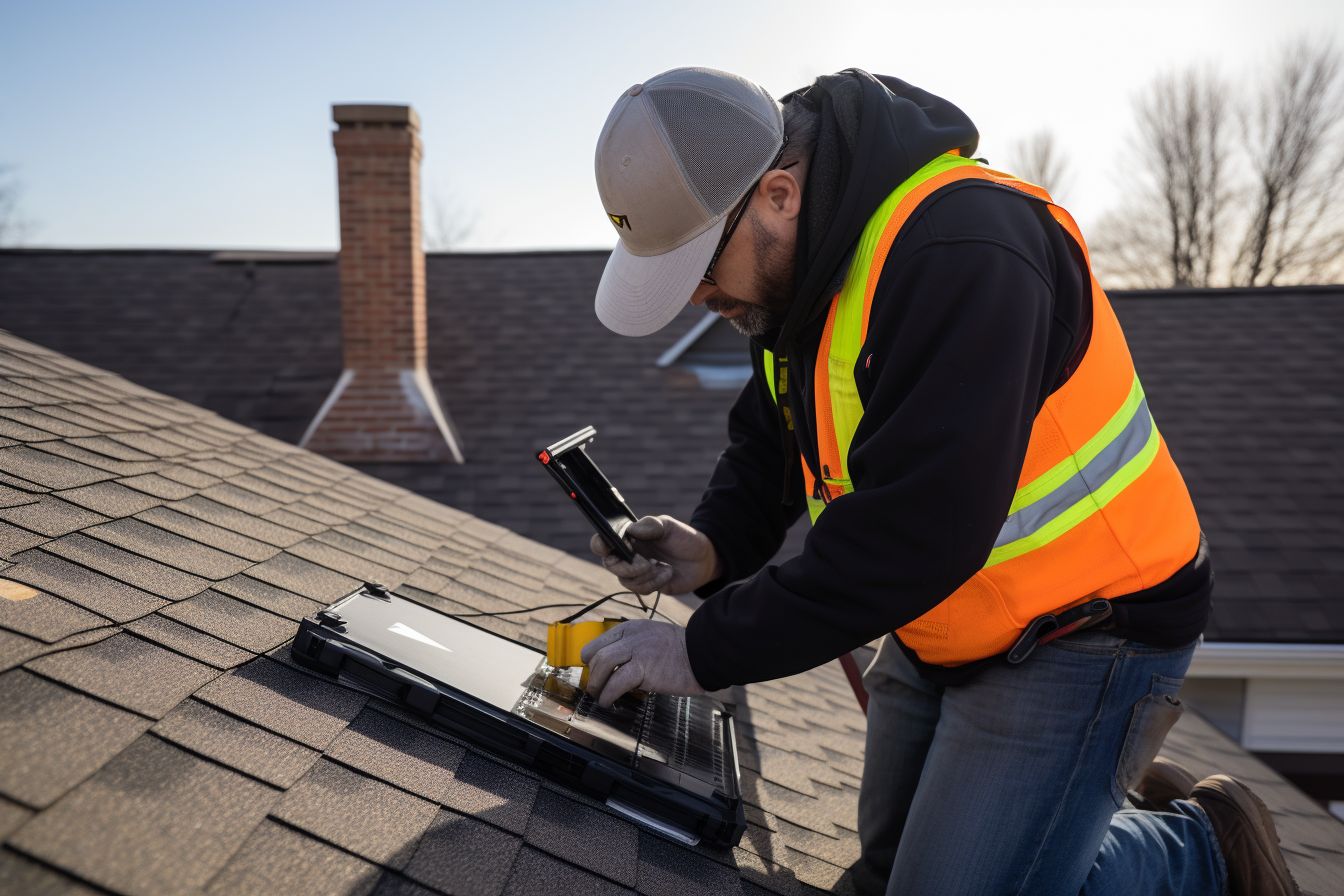
To prevent roof rot and protect your home, follow these steps:
- Maintain proper ventilation throughout your home to reduce humidity buildup.
- Insulate your attic to regulate temperature and prevent condensation.
- Inspect and repair any leaks in your roof or gutters to prevent water infiltration.
- Ensure that your roof has adequate drainage to avoid standing water.
- Keep trees trimmed away from your roof to reduce the risk of debris buildup and moisture retention.
Conclusion
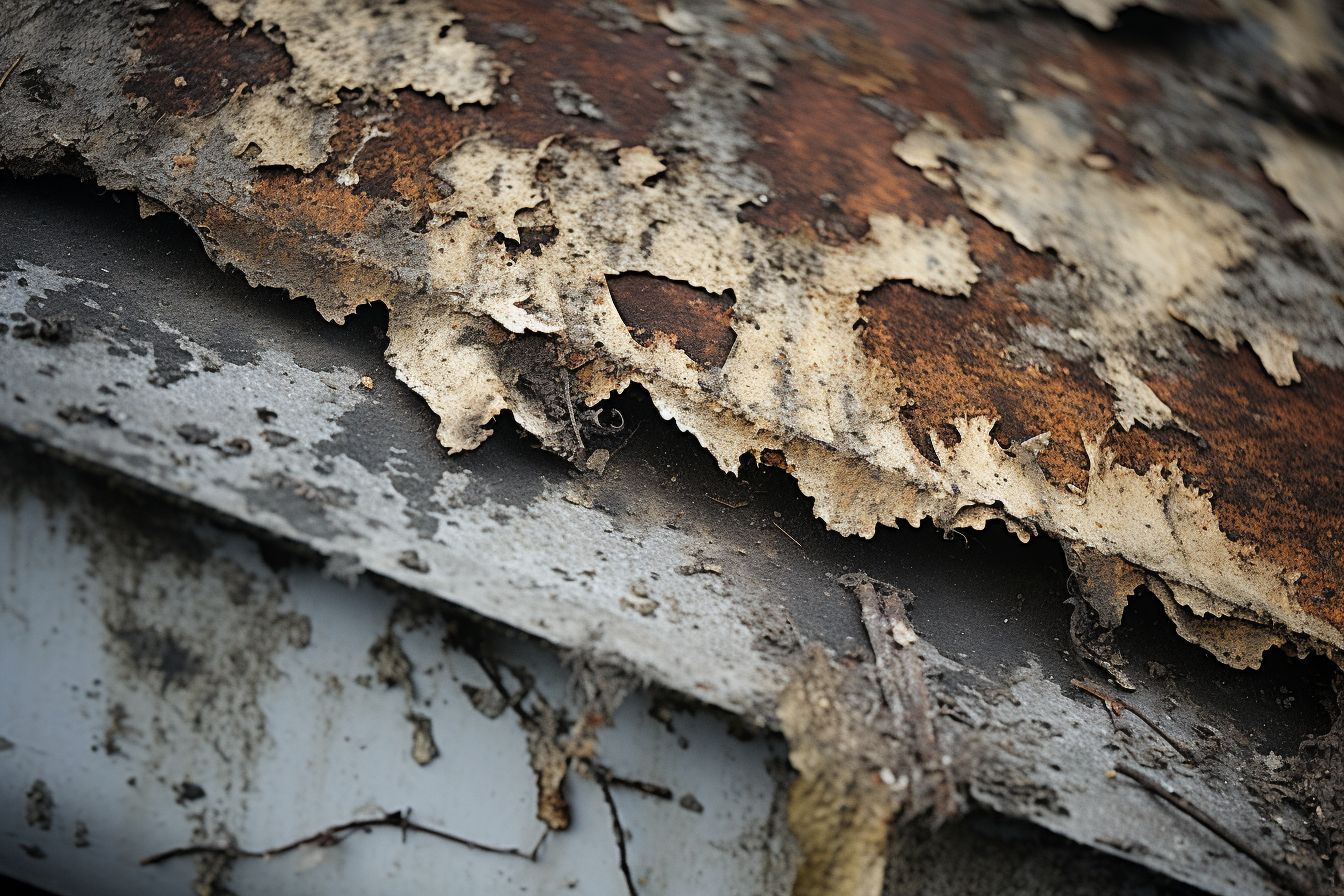
Roof rot is primarily caused by humidity, moisture, and ventilation problems. Fluctuating temperatures in the attic can create a breeding ground for mould and fungus, leading to the deterioration of the roof components.
Moisture from condensation can also contribute to rotting, while inadequate ventilation hampers airflow and exacerbates the issue. Additionally, water leaks can further damage the roof structure.
To prevent roof rot, it’s important to address these underlying causes and ensure proper roofing system maintenance.
FAQs
1. What is roof rot, and how does it occur?
Roof rot is a decay that affects wooden roofs, caused by the growth of fungi or moisture damage over time.
2. What are the signs of roof rot?
Signs of roof rot include discolouration, sagging or soft spots on the roof surface, water stains on ceiling interiors, and the presence of mould or mildew.
3. What causes roof rot to occur?
Roof rot can be caused by factors such as poor ventilation in attics, excessive moisture from leaks or condensation, prolonged exposure to water due to clogged gutters or faulty drainage systems.
4. How can I prevent roof rot?
To prevent roof rot, ensure proper attic ventilation to reduce excess humidity buildup, promptly fix any leaks or damaged shingles, and clean gutters regularly to avoid water pooling on your roof.
5. Can I repair a rotted section of my roof myself?
Repairing a rotted section of your roof requires professional expertise and may involve replacing damaged portions with new materials. It’s recommended to contact a roofing professional for proper assessment and repair.

